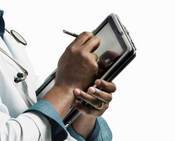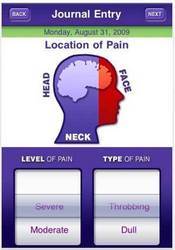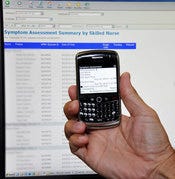Top Healthcare IT Predictions For 2011
Health systems will tackle technology challenges including mobile, manpower, meaningful use, and other mandates.


Top 10 Healthcare Stories Of 2010
(click image for larger view)
Slideshow: Top 10 Healthcare Stories Of 2010
The new year promises to be another busy one for healthcare organizations as industry reform and transformation continue to unfold. Doctor practices and hospitals in 2011 will be focused on electronic medical record (EMR) and other systems tied to the federal government's "meaningful use" financial incentive program, as other mandates, health IT efforts, and challenges will compete for attention.
Stage 1 & 2 Meaningful Use
While bonuses will become available in 2011 for healthcare providers who comply with Stage 1 meaningful use criteria, providers have until 2012 to meet Stage 1 requirements and still be eligible for the maximum financial rewards set by the federal stimulus Health Information Technology for Economic and Clinical Health (HITECH) Act.
It's expected that most healthcare providers will need that extra time to get their systems right. So, whether they're spending 2011 just getting started, are buried in the midst of work, or finishing up on the requirements, most healthcare organizations will likely spend a good amount of time and effort in 2011 preoccupied with achieving Stage 1 meaningful use.
Also, sometime in 2011, the U.S. Department of Health and Human Services (HHS) is expected to complete work on setting its Stage 2 meaningful use criteria, which promises to be more complex than Stage 1 requirements, and will include rules regarding structured health data exchange and continuous quality improvement. Once the next wave of requirements is finalized in 2011 for Stage 2, healthcare CIOs will begin the balancing act of planning for the new mandates while trying to finish Stage 1 work.
Even for pioneering organizations that have successfully deployed EMRs and other key health IT in recent years, 2011 will involve tweaking and making other changes to ensure those systems comply with the HITECH Act's meaningful use requirements.
"We're not set yet for meaningful use, but we have a good amount of work underway," said Phil Fasano, executive VP and CIO at Kaiser Permanente, which in recent years completed the rollout of the nation's largest private EMR installation, an Epic-based system containing data for more than 8 million patients. Once Kaiser Permanente's Stage 1 compliance work is completed, Fasano expects "Stage 2 criteria will be even more significant and rigorous."
ICD-10 Conversion
In addition to the attention spent in 2011 trying to achieve the government's meaningful use criteria, the nation's healthcare providers will also be focused on meeting another important government mandate -- the transition for medical diagnoses and inpatient procedure coding from ICD-9 to ICD-10. Some healthcare IT pundits equate the move from ICD-9 to ICD-10 as the healthcare industry's very own Y2K technology upgrade project.
"People say that ICD-10 is like another Y2K, but the reality is that ICD-10 work requires a lot more domain knowledge than Y2K, it's not as simple as that," said Rahul Kadavakolu, director of marketing for Wipro, one of many IT services companies that are already seeing an uptick in demand for ICD-10 conversion services.

Health IT Boosts Patient Care, Safety
(click image for larger view)
Slideshow: Health IT Boosts Patient Care, Safety
While there are currently about 13,600 ICD-9 codes, the number of codes will increase more than five-fold, to approximately 69,000 with ICD-10. The new coding system, which will be required in 2013 for all medical billing related to anyone covered under Health Insurance Portability and Accountability Act (HIPAA) rules, brings more detail to diagnoses and procedures in the codes used on claims.
For instance, a single code under ICD-10 would not only represent the treatment of a broken foot bone, but would also indicate that the office visit was a follow-up appointment for a fracture that was healing normally or not. Also in preparation to the change over to ICD-10, beginning in January 2012, healthcare providers must change the standards they use for electronic healthcare transactions from Version 4010/4010A1 to Version 5010. Without Version 5010 standards being in place and tested prior to ICD-10, healthcare providers face delays in claims being transacted and payments being paid from the Centers of Medicare and Medicaid Services (CMS).
"ICD-10 -- the sober reality of the level of work required will hit hard," said Marc Probst, CIO at Intermountain Healthcare in Utah. "Tension is already rising between the numerous government mandates, and 2011 does not look like the year a lot of relief will be forthcoming," he said.
Accountable Care Organizations
If you're still hungry for even more government mandates, stay tuned. Also on the regulatory scene in 2011, more details will emerge from CMS about its requirements for accountable care organizations (ACOs), which got a boost in the healthcare reform legislation that passed in 2010.
"The ACO model has the potential to help drive real efficiencies and process reengineering," said Jennifer Covich Bordenick, CEO of eHealth Initiative, a non-profit organization that advocates the use of health IT and whose 200 members include patient groups, healthcare providers, health plans, and researchers.
The emerging rules from CMS for ACOs will include details of how these healthcare provider organizations will be financially rewarded for improving quality and coordination of patient care and reducing costs. Health IT is important for ACOs working to making those care improvements happen, and so healthcare providers eyeing to participate in ACOs will need to pay close attention to matching their IT strategies with the emerging CMS requirements.
With healthcare reform, meaningful use, ICD-10, and other mandates on the plates of healthcare providers, "the industry is going through changes that are unprecedented to leverage technology" to improve quality of care and process efficiencies, said Kaiser Permanente's Fasano. "The investments in technology [by the healthcare industry] will be great" in 2011, he predicts.

15 Healthy Mobile Apps
(click image for larger view)
Slideshow: 15 Healthy Mobile Apps
Mobile Health IT
Aside from the many mandates healthcare providers will be juggling, another hot area in health IT next year will be the continued evolution of mobile health tools.
"We've seen an explosion of mobile apps" in the mainstream, Bordenick said. "There will also be an explosion in patients and physicians wanting to use these tools," said Bordenick.
"Patients using technologies like smartphones to manage and help their health and wellness are taking hold because these are technologies that are already so familiar to people," said Fran Turisco, research principal in healthcare emerging practices at analyst firm CSC.
Mobile healthcare applications that Turisco predicts will be hot in 2011 are those that help patients better self-manage their chronic illnesses.
Among promising new mobile applications is a diabetes management system from WellDoc. The app utilizes smartphones to remind diabetic patients to do multi-daily blood glucose readings and take their medications, and enables individuals to collect and transmit data for feedback from caregivers. The use of mobile applications, like those offered by WellDoc, to assist in patient wellness and disease management is already gaining acceptance by some health plans, and that's likely to gain more momentum in 2011, said Turisco.
Also, sensor technologies will enable more sophisticated medical monitoring, on the go. For instance, Proteus Biomedical recently received Food and Drug Administration (FDA) approval for a wireless adhesive sensor technology called Raisin. This Band-Aid-like device can track and record a patient's heart rate, physical activity, body position, and other biometrics, and then transmit the data via Bluetooth or mobile device, said Turisco.
Abnormalities can be spotted remotely for earlier intervention, and monitoring can also eliminate the need for more frequent physician office visits.
"This is an application that lets patients monitor their heart rate in unobtrusive manner," said Turisco. That makes the technology attractive to patients, she said.

17 Leading EHR Vendors
(click image for larger view)
Slideshow: 17 Leading EHR Vendors
It's just not third-party vendors who'll be offering new mobile healthcare applications. Some healthcare providers and health plans, including Kaiser Permanente, are planning their own mobile offerings to clinicians and patients for 2011.
"Mobile will turn care delivery on its ear," said Fasano, adding that Kaiser Permanente will pilot new mobile offerings for clinicians, as well as its patients and health plan members. Increasingly, patients will be able to "interact with all their health information not only from a PC, but with a mobile platform," he said, declining to divulge details of the mobile applications Kaiser Permanente is developing.
Still, the demand for portable health apps -- while exciting -- won't necessarily be easy on healthcare organizations, said eHealth Initiative CEO Bordenick.
"It will be a challenge for CIOs to figure out how to manage all these applications," Bordenick said.
Also, unfortunately, Bordenick predicts, "some inevitable breach" will likely occur, she said. "There's a fine line between innovation and standardization," she said.
Among mobile healthcare challenges for IT organizations are infrastructure issues, including healthcare providers deciding which platform and devices their applications will support. When a healthcare provider rolls out its own mobile applications for clinicians to use, the organization can specify which devices and platforms those apps will support. But when offering portable healthcare apps to consumers, the choices of platforms and mobile devices are much broader. "Some vendors are harmonizing their platforms for the delivery of content in agnostic ways," said Fasano. "We plan to leverage that," he said.
The continued evolution of new mobile health applications and their use by patients will also be buoyed as more doctors nationwide deploy EMR systems, setting up the "the foundation for these patient-to-provider applications to work together," said CSC's Turisco. "The underlying foundation supporting this patient-to-provider connectivity is the EMR, she said.
Staff, Vendor Shortages
Another big issue that healthcare CIOs will face in is a shortage of people to tackle all those health IT projects.
"Staffing will be an issue in 2011," Bordenick said. "I get calls every week from organizations looking for people" who have experience in health IT, EMR, data exchange, and other key areas healthcare providers are focused on right now, she said.
CIOs and IT managers will be forced to contend with shortages of people who have previously worked on EMR deployments, health information exchange (HIE) efforts, and other technologies that are involved in the effort to digitize and secure patient data -- and understand the privacy, governance, and other issues that are involved with all this, she said.

Healthcare Innovators
Slideshow: Healthcare Innovators (click image for larger view and for full slideshow)
Also, when it comes to tapping vendors to assist in health IT related deployments, keep in mind that their resources will likely be strapped by increased demand from healthcare organizations as deadlines approach for meaningful use and other mandates.
"Begin the queuing up for fixes and enhancements" earlier, rather than later in the year, suggests Intermountain's Probst.
"With the huge proliferation of vended software products, demand will rise for "modifications," "enhancements," and "changes" -- and the vendors are going to be too busy on new installations and programming to meet new requirements," he said. "Waiting times for specific changes could get long and it is likely some desired changes will be responded to with flat-out 'no,'" he predicts.
With vendors being stretched thin, too, it'll be important for healthcare providers to tap their own resources wisely, taking advantage of expertise that's within, especially when new EMR systems are deployed.
"Nurses are better with reengineering than doctors, nurses are more involved with the continuum of care than doctors, who often see less of the patient than nurses," said reengineering consultant and author Jim Champy, author of Reengineering Health Care, which was recently published.
"Nurses are very open to change," said Champy in an interview with InformationWeek. "If I was sitting in Washington working on policy, I'd want tens of thousands of nurses and nurse practitioners" providing input, he said.
Health Information Exchanges
While ideas get exchanged within healthcare organizations about the best ways to tackle big 2011 projects, HIEs -- the regional and state-level organizations that coordinate the policies, governance, and technologies related to health data sharing among healthcare providers -- will be facing their own challenges and opportunities for progress in 2011.
"From a health information exchange perspective, in 2011 I think we are going to see a much greater shift towards an ability for EMRs to interact with HIEs more directly and with greater interoperability," said Scott Afzal, program director of the Chesapeake Regional Information Sharing for our Patients (CRISP), the designated statewide HIE in Maryland.

Slideshow: Who's Who In Healthcare IT
Slideshow: Who's Who In Healthcare IT
"Most health information exchanges today allow for providers to make requests for data by going to a Web portal that is offered by the HIE," said Afzal. While HIEs may be capable of allowing for standards-based queries from EMRs, and some EMRs may be capable of producing standards-based queries, "the technical integration hasn't materialized this past year to any great degree between EMR companies and HIEs," he said.
But Afzal is hopeful for progress among healthcare data integration in 2011. "Moving into this year, I think we will see a deeper level of interoperability between HIEs and EMRs to support Integrating the Healthcare Enterprise (IHE)-based transactions," he said.
Still, one of the challenges HIEs will see this year is related to the tech talent shortages that healthcare providers will face -- "competing for the attention of EMR vendors," said Afzal.
"For the most part, for an HIE to integrate with an EMR, you need some level of participation from the EMR vendor," he said. "As EMR companies ramp up sales and become more thinly spread, they will think carefully about where they dedicate resources," he said.
Intermountain's Probst suggests keeping "an eye on Virtual Desktop technologies," to lower costs. "Although demands for IT will continue to rise, cost must come down," he said. "CIOs must be looking for innovative ways to manage the costs in our information systems organizations."
Change Will Be Incremental
While 2011 is full of important deadlines, big projects and significant opportunities for innovation at healthcare organizations, the industry needs to step back and realize that the cumulative reform and new developments won't bring an overnight transformation to healthcare, said Champy.
"Healthcare is very complex, and very fragmented," he said. "This evolution will continue for the next five or 10 years," he said.
"Will 2011 produce a 'silver bullet'? I haven't seen a real game changer yet... but I have great faith one is on the horizon," said Intermountain's Probst. "We need to stay aware of what is going on in new research and development," he said.
SEE ALSO:
Top 10 Healthcare Stories Of 2010
Healthcare iPad Deployment To Approach 70% In 2011
Meaningful Use Stage 2 Requirements Debate Begins
About the Author(s)
You May Also Like







